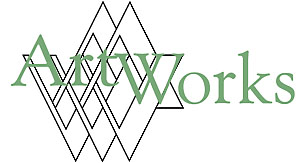|
•Radio series offers
intimate visits with writers
•Program
highlights •Mentor shares art and life
•The creative mentor
•The Griffin & the Minor
Canon
•Interview with David Selby
•What is W;t
about?
•Quality arts
education?
•How can I help students in my
community get a quality arts
education?
•WV songwriters on new
CD
•Quilting the Sun:
Journey of
a Play
•Dance from your
heart
•New festival
celebrates
singer-songwriters
|
How can I help students in my community get a quality arts
education?
Start by
looking for information. Local schools systems are faced with the
task of making arts education policies and requirements work in
local schools. County level administrators and principals decide
who will teach the arts, how much time will be spent on the arts
and what kinds of resources will be devoted to the arts. The only
way to find out what is happening in your community is to ask. What
questions should you ask?
• Are
all students receiving arts instruction according to state
standards?
• How often do does my child receive arts instruction?
• Is a specialist teaching my child?
• How are my child’s skills being assessed in these
subjects?
• Do teachers have resources such as current textbooks, visual
arts supplies, computers, CDs and an adequate stereo system?
• Are arts educators and general classroom teachers receiving
professional development in the arts?
• Are artist-in-residence programs planned for the next school
year?
• Does the local high school offer instruction in dance and
theater in addition to music and visual art?
• Are students, including high-achieving students, encouraged
to take arts classes at the secondary level?
Identify
potential partners who can help you support arts education in your
community. The key to improving arts education is building a base
of support in your community. Find people who care about supporting
arts education and share information with them. Where do you find
these people?
• Talk
to groups such as the PTA, PTO, churches, civic organizations or
the local school improvement council.
• Talk to artists, teachers, students, local arts
organizations and people who work in arts-related businesses.
• Talk to people who organize civic events such as fairs,
festivals and benefits. They usually have contacts in the arts
community.
• Talk to school administrators, business leaders, elected
officials and members of the media.
• Seek out local artists, arts councils or arts organizations.
No only might they be interested in joining an arts education
support group, but they also have access to arts education
resources.
Form a group
to support arts education in your local schools. A group can set
goals, assign tasks and support one another in the effort to
improve arts education in your area. What can this group
do?
• Make
connections with and provide information to school administrators
who are responsible for arts education.
• Coordinate with the local media in a community-wide campaign
to promote arts education.
• Engage in fundraising activities and plan for specific arts
programs and demonstration projects.
• Coordinate professional development opportunities for
teachers in the arts.
• Arrange for speakers to present information about arts
education for boards of education and civic organizations.
• Write letters in support of arts education to elected
officials.
• Monitor board of education policies and actions related to
arts education.
• Request that county school budget reductions be spread
equally across the curriculum and not be placed solely in the area
of arts education.
The most
critical factor in sustaining arts education in schools is the
active involvement of influential segments of the community.
Together, parents, teachers, artists and community leaders can
ensure that all West Virginia children receive a quality arts
education. Take action so the children in your community will
“know quality when they see it.”
|

